Utility Vehicles Are All-Terrain Trucks
Crunching over the construction demolition left by a hydraulic breaker, maneuvering around mountains of spoils left from a digging excavator, stopping to pick up a mud-covered crew for lunch, a work-focused utility vehicle can cross busy jobsites with speed, safety and power. The dust kicks up and lingers in the air, swirling for a moment. The spinning tires grip and the utility vehicle bursts forward again. There’s more work to be done. While the classic pickup has been a long-standing jobsite essential, a utility vehicle (or UTV) has become the new popular all-terrain transport alternative. Engineered with a cargo bed, tow-hitch, racking for tools and even PTO or hydraulic-fueled attachments, UTVs are now being specifically engineered for work applications in construction, landscape, agriculture and other applications. To get a grip on the latest market trends, maintenance tips, buying advice and coolest models, we reached out to eight brands in the UTV industry. Their top product managers shared these insights.
Aaron Stegemann
Business Development Manager for Polaris Off-Road Vehicles

Favorite Unit: Of the Polaris BRUTUS lineup, I find the BRUTUS HDPTO to be my favorite. We built it to be the most versatile, capable and comfortable utility vehicle, and you realize this the moment you sit in the cab. The ability to operate six purpose-built attachments through the ease of a joystick, climate-controlled cab and the Multi-Link Coil over DeDion Rear Suspension for a smooth ride over any terrain are a few of the features I enjoy the most. In the short time the BRUTUS HDPTO been on the market, we’ve had very positive feedback from our customers and dealers. Many of them are blown away by the vehicle’s power-take off capabilities and 24-hp diesel engine.
Dan Muramoto
Kubota Utility Vehicle Product Manager

Favorite Unit: The best in RTVs just got a whole lot better and the star of the line, and my personal favorite, is the RTV X-1120D. There are so many great new features and options offered on the new Kubota RTV X-1120D — from its 24.8-hp diesel engine and higher ground speed of up to 29 mph to its blue-tinted halogen headlights and attention-grabbing polished alloy wheels. The RTV-X1120D is Kubota’s new deluxe model that offers a step up in power, comfort and style. According to Power Products Marketing’s North American Utility Vehicle Report, Kubota RTVs have been the best-selling diesel utility vehicle in North America since 2004.
Joel Hicks
Product Support Manager for KIOTI
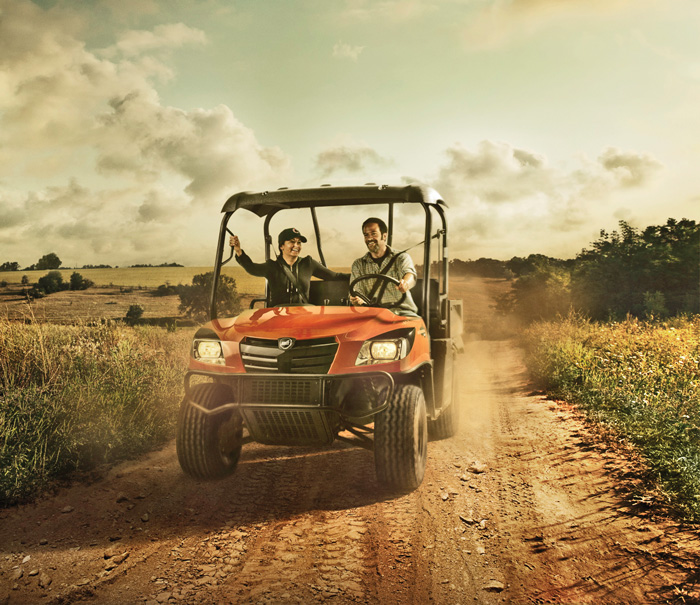
Favorite Unit: The KIOTI Mechron 2200 reaches out to the work-minded with a sporty feel. While it offers a 1,300-lb towing capacity, 1,600-lb payload with a three-cylinder diesel engine, seating for three and the largest bad in its class, it also has a sportier feel than most work machines. With 12 in. of ground clearance, four-wheel independent suspension and four-wheel disc brakes, the Mechron is more than capable of working all day and still carry all of your toys to the woods for a weekend hunting trip or marshmallow roast with your kids.
Greg Lucey
Case IH Marketing Manager for UTVs
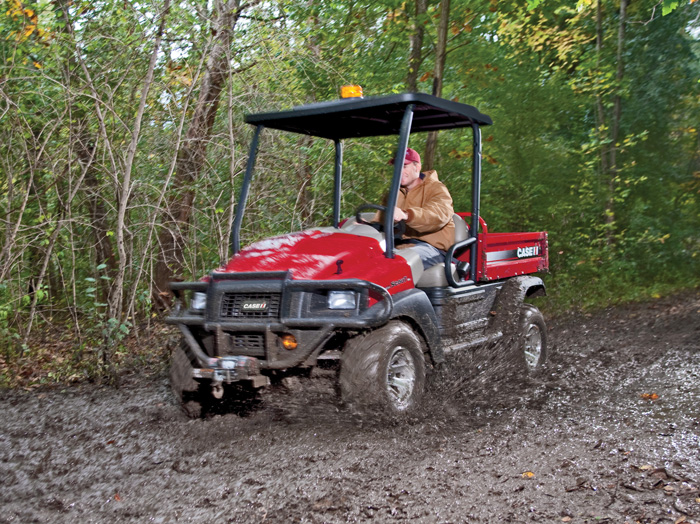
Favorite Unit: My favorite Case IH UTV model is the Scout XL with two seats. I like it because it has a good suspension, offers a comfortable ride and provides good power. It can certainly match up to the competition. Most customers I’ve talked to about this model like it, as it offers a comfortable, smooth ride. Many Case IH customers use them for chores and other needs around the farm. If you’re looking for a work first, play second vehicle, then Case IH Scout utility vehicles are the right choice. These units were designed to be work vehicles. In my experience, 4×4 styles of UTVs have the largest market share. For Case IH customers, diesel UTV models are more popular, but in the overall UTV market, gas engines are purchased most often.
Kevin Lund
Product Line Marketing Manager for John Deere Utility Vehicles
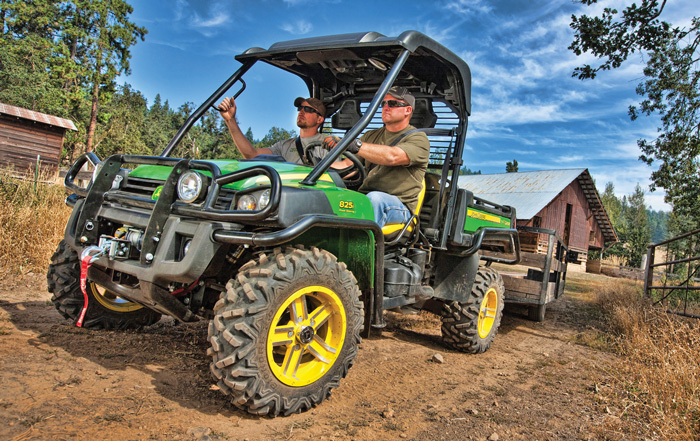
Favorite Unit: The XUV 825i offers great off-road performance for today’s operator. It’s John Deere’s best-selling utility vehicle and transforms the way our customers run their business. The Gator has ideal power, acceleration and a top-speed of 40 mph. It also has a lot of capacity and versatility in terms of cargo and things you can do with the vehicle. The XUV 825i is built as a heavy vehicle (hydro form) with 50 hp. While the XUV 825i can hold its own on the jobsite, its top-end speed is sufficient for off-road environments. It’s the ideal vehicle for work and play. The XUV 825i S4 is the newest addition to the Gator family. The vehicle allows for extra passengers or needed cargo space. Two additional passengers can be transported in the rear seat area that includes a large under-seat storage compartment.
Ken Paul
New Holland Utility Vehicle Product Marketing Manager
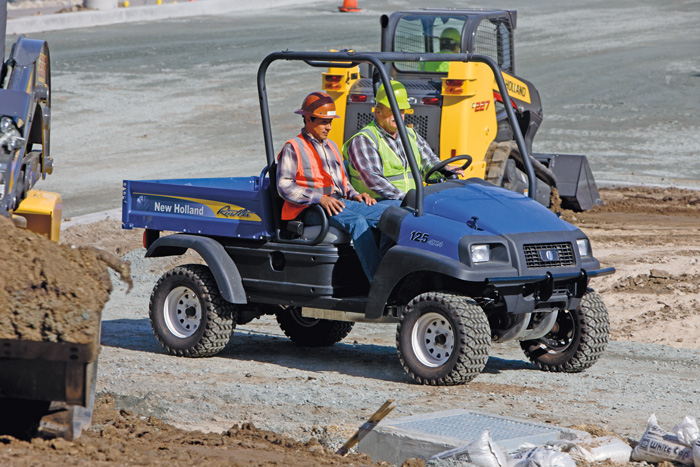
Favorite Unit: My pick is New Holland’s Rustler models 120 and 125, identical except for diesel engine in 120 and gas in 125. Strong frames are crafted from aircraft grade aluminum, and stronger than conventional tubular frames provide remote air intake under front cowling. This unit has superior ground clearance, which permits comfortable travel over rough terrain. I love the spacious operator areas. It’s roomy with comfortable space for both driver and passengers. I’m a big fan of the tilt steering column, which adjusts to almost any size driver. These units are available with a 13-position, fore-and-aft-adjustable bucket driver seat, which increases driver comfort even further. Plus, there are no levers to pull with automatic all-wheel drive — just get in and go.
Jonathan Thibault
Head of Product Management at Prinoth
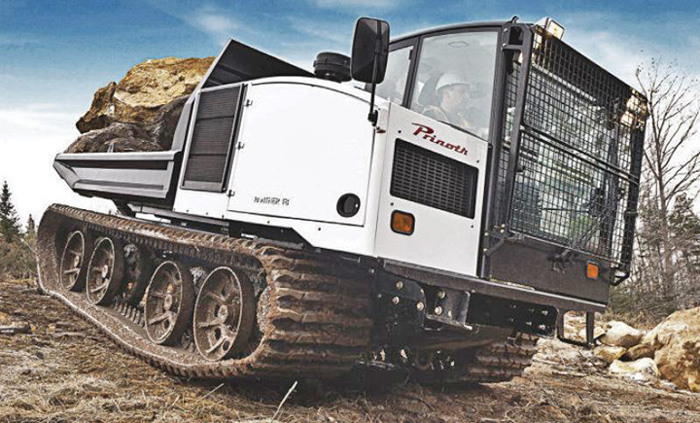
Favorite Unit: I love the Panther T8 tracked carrier from Prinoth because I think it’s the most performance-driven vehicle on the market. Its truck-style chassis allows for easy attachment installation and its unique patterned rubber tracks exert just over 4 psi on the ground. When comparing with competition, the Panther T8 is also two steps ahead technology-wise due to standard equipment such as the automotive control, automatic braking system and easy-to-drive steering wheel. These are all user-friendly features — something big to consider when different operators could drive the vehicle. Our customers are pleased with the performance and reliability the Panther T8 offers. It’s a great return on investment — those are the key words for them.
Kurt Meyer
Club Car’s Commercial Marketing Manager
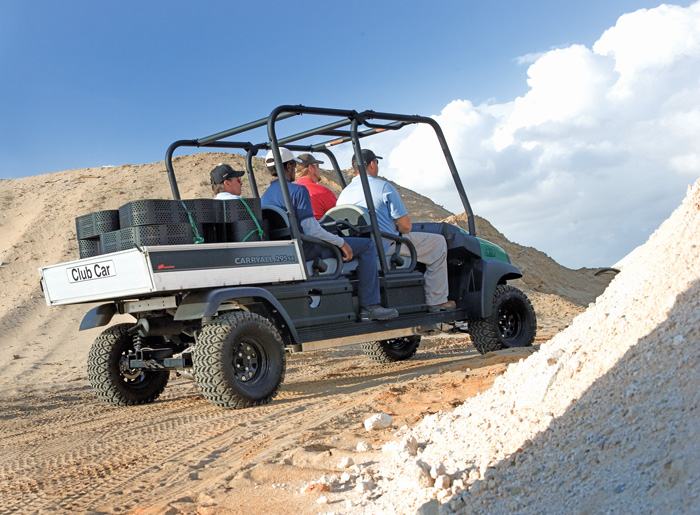
Favorite Vehicle: I’m a big fan of the Club Car Carryall 295SE. The vehicle’s exclusive IntelliTrak automatic four-wheel drive system senses the ground it’s on and shifts automatically. No training is required. Its four-link semi-independent rear suspension system delivers independent suspension performance with a solid axle’s strength. This makes for excellent ground clearance, even when fully loaded. The vehicle carries bed loads of up to 1,050 lbs over rocky terrain and maintains its axle ground clearance of 8.3 in. while delivering a comfortable ride — something competitive products can’t do. It seats four, with lots of cargo space, features a diesel motor with sealed intake system, and has a total vehicle capacity of 1,600 lbs. You can’t beat it for construction applications.

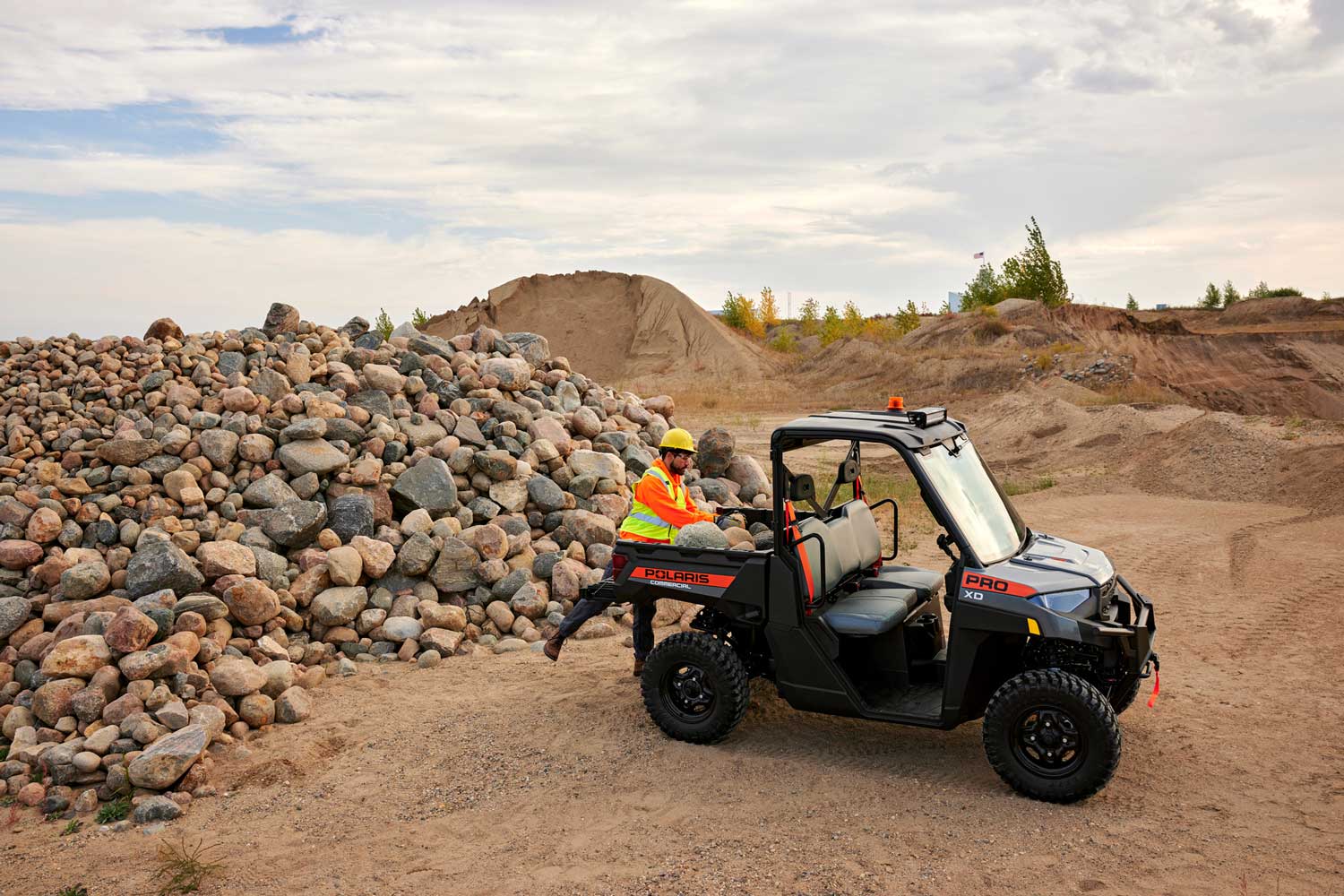


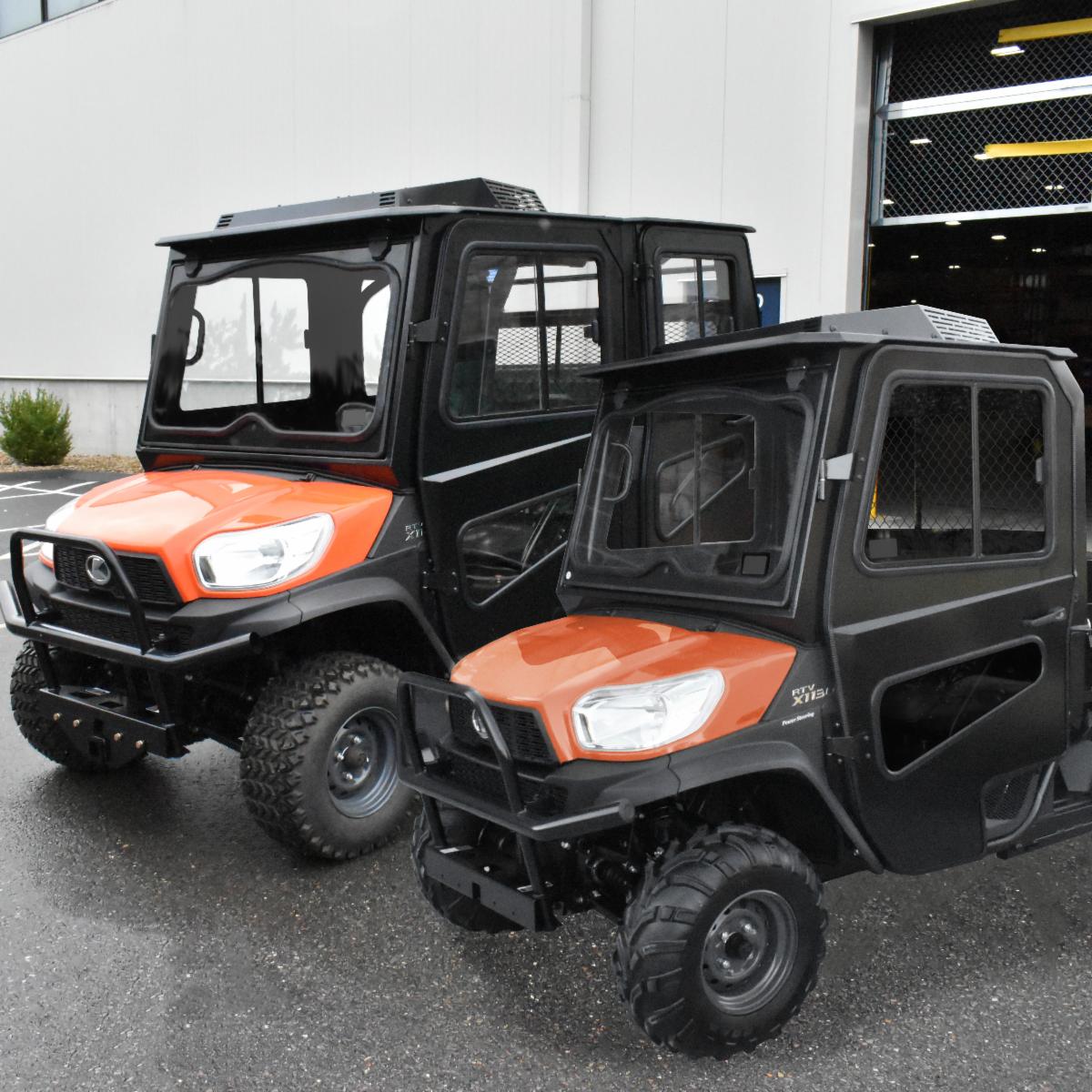
Comments are closed here.